Trees budding, birds chirping, and rain falling, nature is truly amazing. Nature journaling with kids is a great way for children to explore and connect with the natural world.
Not only is journaling fun, but it is an easy way to get outside together!
A perfect activity to go along with learning about animals, insects, plants, and weather. Or simply bring one along while adventuring and exploring outside together.
Kids of all ages can get excited about making and keeping their own nature journal. What better activity to encourage your kids to become nature explorers than recording in a nature journal.
Read on to find out exactly why this type of journaling is beneficial to kids and some ideas to get your kids started with their own nature journals.

This Post May Contain Affiliate Links. Please Read Our Disclosure Policy.
Jump to:
What is Nature Journaling
Nature journaling is the act of keeping a log of observations, questions, and data collected outside. A nature journal, or a nature notebook, is a place to record these observations.
Nature journaling is all about taking the time to look around and connect with the natural world. Journals can be guided or self led. Use it as a place to record information learned while being outside.
Kids can record interesting discoveries including new species or weather conditions. Pair it with a nature study or make journaling outside a routine part of your day or week.

Why Keep a Nature Journal with Kids
Teaching science is all about giving kids a chance to strengthen their observation skills. Keeping a nature notebook is a great place to start.
Many famous scientists, including Charles Darwin, first recorded observations which led to important discoveries in their own nature journal.
Keeping a journal is an excellent way to get kids outside not only playing, but observing the natural world.
Even if you use prompts, children will create an entry that is their own. No two journals will be exactly the same.

If a child is reluctant to keep a "journal" consider calling it their own nature field guide, nature notebook, or book of nature observations.
Encouraging young kids to observe natural objects and living things is what science is all about.
Keeping a Nature Journal with Kids
Kids are natural observers as they try to make sense of the world around them.
Creating and keeping a nature journal with your kids is a wonderful way to capture their natural enthusiasm about nature.
Keep it simple and have kids make observations of natural objects. These include living and nonliving things found in the natural world. Think rocks, water, insects, and plants.

The entry above is from a cloud journal. Help little learners use a ruler to add lines for them to write on. Or let them write free hand on the blank paper.
Step into your own backyard. Or explore new habitats at a local park or national park. You might be surprised by what is present even in a backyard habitat.
If keeping journals with different aged kids, it would be fun to see the unique way they each interpret the world around them.
Creating an entry based on a discovery made in your own yard will look very different for young vs older learners. Its amazing how different the world looks through a child's eyes.
Keep Your Own Journal along with your Kids
Don't let your kids have all of the fun. Keeping a natural journal as an adult can also be a relaxing and enjoyable hobby! Kids would love to see how your nature journal compares to theirs. Keeping one yourself is a wonderful way to connect with your kids.
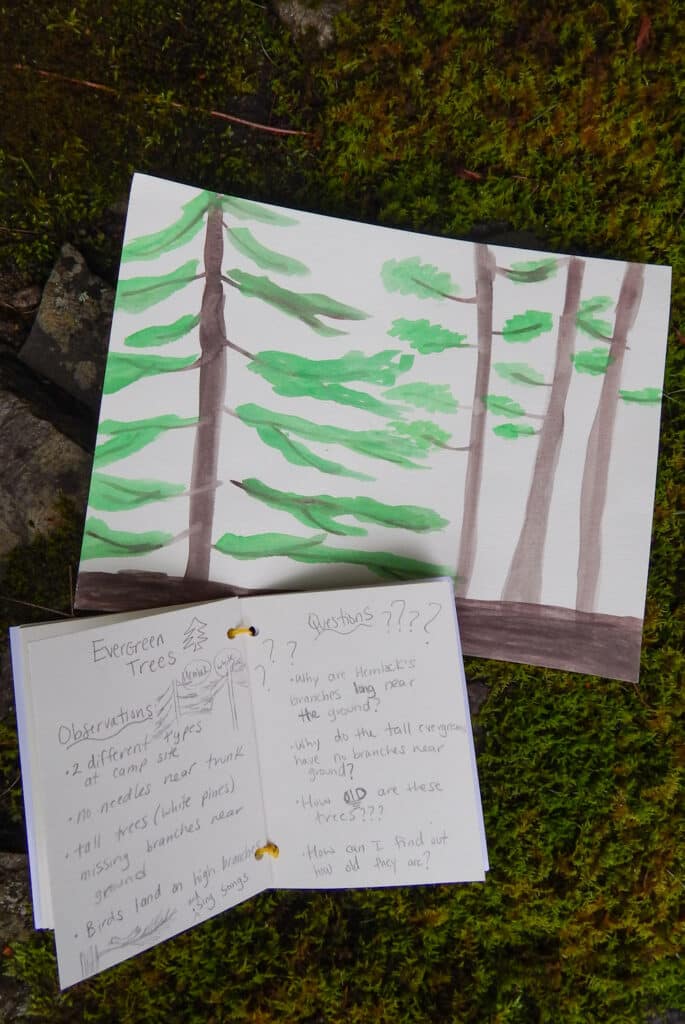
And no, you do not need to be the best artist or illustrator. However, don't be surprised if your skill's increase the more frequently you use the journal.
Take a few minutes to make a quick sketch or record a few thoughts. Journaling is not only beneficial to kids, but adults. If you find yourself looking to reconnect with nature, try keeping a nature journal.
Types of Journal Entries
Typically, journals contain blank pages instead of lined paper. This gives children the freedom to using both words and illustrations.
Similar to a science notebook, each child will have their own dedicated nature journal. The list below can give you some ideas to get you started keeping a nature notebook with your kids.
Combine a few of each or stick with one type of entry. Nature journaling is all about making connections with the natural world in your own unique way.

Provide more guided instruction if you are turning an entry into a more formal lesson with your kids. Or provide them with a list and let them pick the type of entry they make.
List of Ideas for Entries
- Illustration or Sketch of One Object
- Sketch of a Collection of Objects
- Detailed Scientific Sketch with Labels
- List of Questions and Inferences
- Data Collection for a Specific Species
- Weather Report with Weather Conditions
- Poem or Quotes
- Short Story
- Personal Reflection (diary entry style writing)
- Sound Journal (describe in detail what you hear)
- Habitat Map with a Key
This is just a list to get you started. Once you get the hang of it, keeping a nature journal can be as open ended or as guided as you see fit.
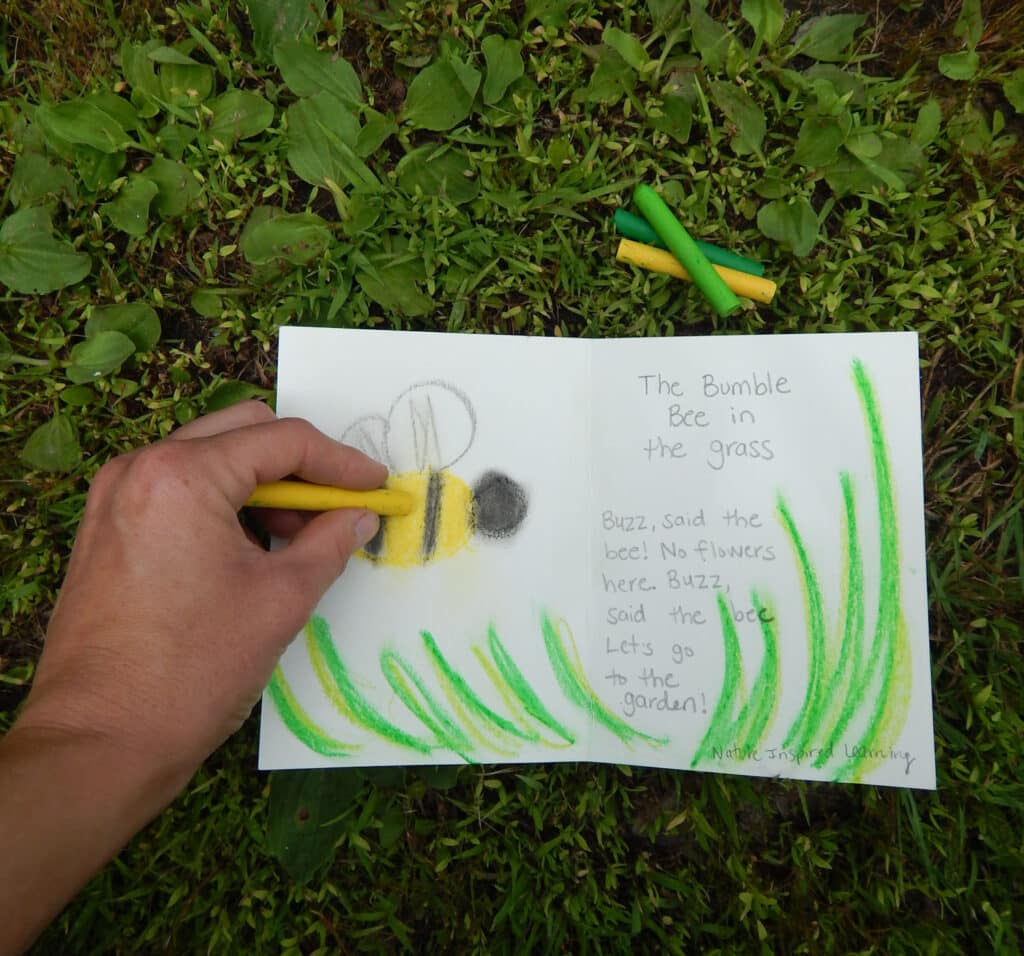
Some kids enjoy drawing and illustrating. Others are more interested in writing stories, poems, and descriptions. Let their questions and natural curiosity guide the entries once they get the hang of it.
Basic Nature Journaling Supplies
- A blank spiral bound notebook
- Watercolor paints
- Colored and Graphite Pencils
- Field Microscope
- Magnifying Lens
- Basket to collect items
- Optional: ruler
You don't need much to get you started, but there are a few items that are great to use. I like using a blank spiral bound notebook because it keeps everything together in one place.
Small mini notebooks are great for really young kids, while older children will appreciate having more space in a larger notebook. The colored pencil one that is linked, contains paper similar to cardstock. I found watercolor paints can be used on the pages along with regular pencils.
Skills to Practice
Even with a self guided nature journal, kids can practice a variety of skills. If you are looking for a more guided approach, have them focus on one or more of the skills when they make an entry.
In their purest forms, a child chooses what to focus on and how to structure an entry. However, you do what works for you and your kids. I know from personal experience that some kids need some guidance to get them going.
Math
Math skills including counting, comparing, and tallying are easily adapted for kids with different math abilities.
Making observations including noticing small details, comparing and contrasting, and recording measurements can all be done.
A simple technique is to record how many of one type of species you see. This can vary depending on the age of your child.
Birds, butterflies, or even beetles can be counted and recorded. Kids can draw illustrations to go along with their data.
Art
A favorite of many children is to practice art skills. Take along colored pencils, watercolor pencils, basic paint set, or even pencils with different grades of graphite.
For the blueberry nature notebook entry below, pastels which are a type of chalk were used.
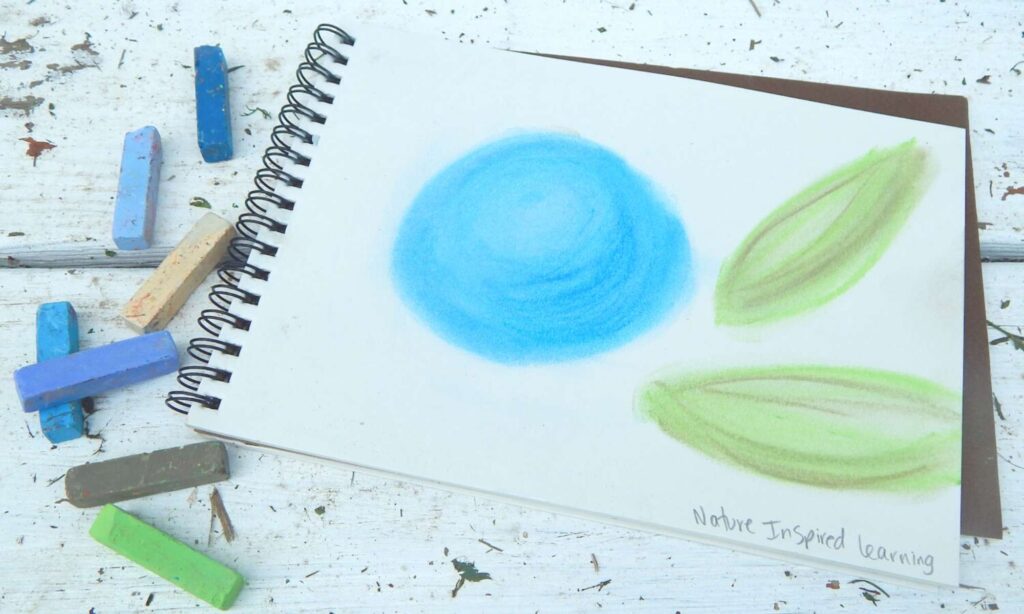
I don't know about you, but whenever I use something other than typical crayons to draw something, I feel like an official artist. It is easy to create that special feeling with a few simple changes to the supplies you use.
The above journal entry was made while observing blueberries outside. Sometimes, your kids will enjoy just making drawings without adding any text.
Science
Use a field guide to learn scientific names to go along with the common name of the different plants and animals that you discover. Add scientific labels pointing to the different parts.
For a fun way to increase engagement bring along a field microscope or magnifying glass. Kids of all ages absolutely love using these two tools.

Geography
Consider bringing along a compass to practice compass reading. Even young learners can begin reading a compass by identifying the letters for each of the four main directions.
Writing
Language Arts and literacy skills can easily be incorporated into nature journaling. Presenting writing in a new and creative way may spark the interest of a child who is usually hesitant to write.
Many children will enjoy sitting in a quiet spot and writing a short poem, journal entry, or creative writing piece. Even writing down short descriptions or labels to go along with a drawing is a good start for kids who are reluctant to write.
Nature Appreciation
Is there any better way to learn about and appreciate nature than to keep a nature journal? Even a gross looking fungus or a slimy snail can open your child's eyes to all that nature has to offer.

The best way to learn to appreciate nature is to experience it first hand. Even the simple act of observing objects in a backyard habitat will have kids experiencing nature in a whole new way.
The Hike written by Alison Farrell is one of my new favorite children's books about exploring nature. If you are looking for a way to encourage your child's appreciation for all of the wonders of nature, this book will not disappoint.
The illustrations are captivating and contain labels to help your kids practice identifying plants, animals, and other wild things.
Nature Journal Prompts
If you are not sure how to start or looking for ideas, check out the list below for prompts. These printable nature scavenger hunts are also great for nature journaling.

Sometimes it just takes sitting down, stopping, and really taking a few minutes to take it all in. Within a few minutes some kids will be eager to point out different observations including new discoveries.
Others will benefit from some prompting from you, the parent or another child. Providing a prompt can get a child ready to focus on a specific object or task.
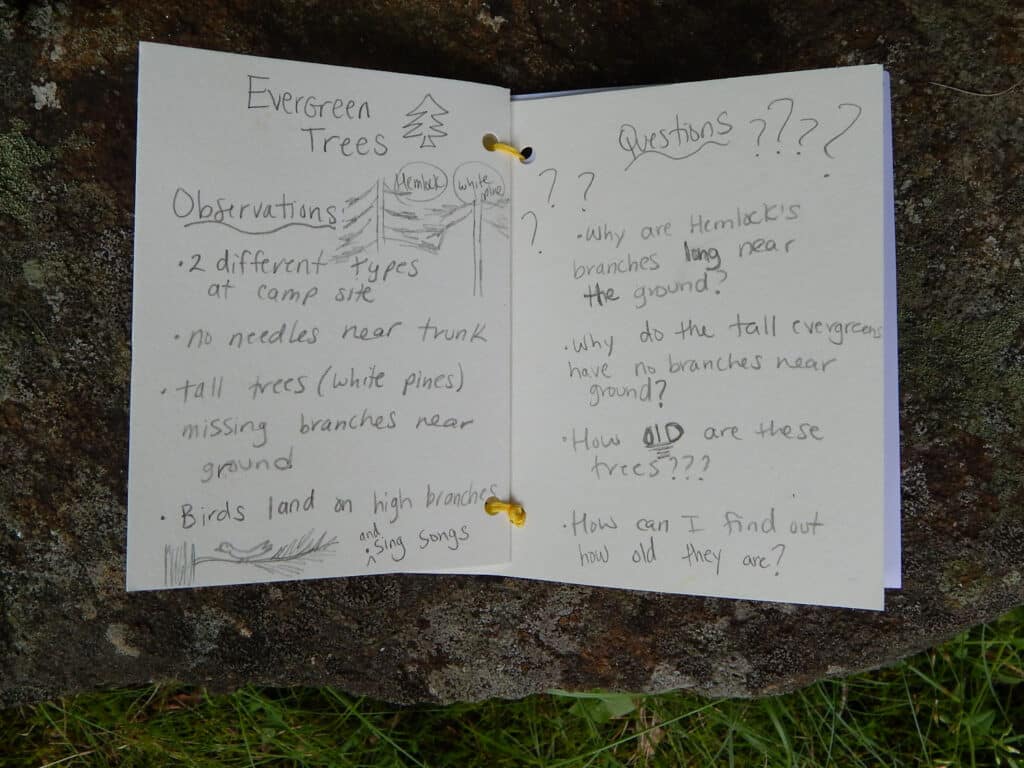
Journal Starters
- Record what you hear. Try to see what is making the different sounds.
- Draw something containing a specific color(s)
- Pretend to be a tree or insect and write from their perspective
- Measure a few small items using a ruler
- Compare the size of three different objects
- Collect 4 different leaves to draw
- Draw and describe the weather
- Count the number of ...
- Make a sketch of ...
If you are just starting out or it is your first time writing an entry, kids will need some types of guidance to get started. Stick with simple items that you can observe close to home, leaves, butterflies and insects, birds, and flowers.
Even something as simple as reading a book about being out in nature. The Hike a beautifully illustrated children's book illustrated by Pete Oswald is a wonderful pick. Gorgeous illustrations with little to no text can get conversations stated with your kids.
Sample Journal Entry
The entry below was made while observing flowers blooming in a garden. Illustrations show the different characteristics of yellow flowers.

A few words are added including the color of the petals and centers. At the bottom I recorded the weather conditions, date, and the location.
Observing Flowers
Flowering plants make an excellent focus for a journal entry. Kids are naturally drawn to flowers. Look closely to notice small details. Small ladybugs, bumblebees, and even ants love flowers.
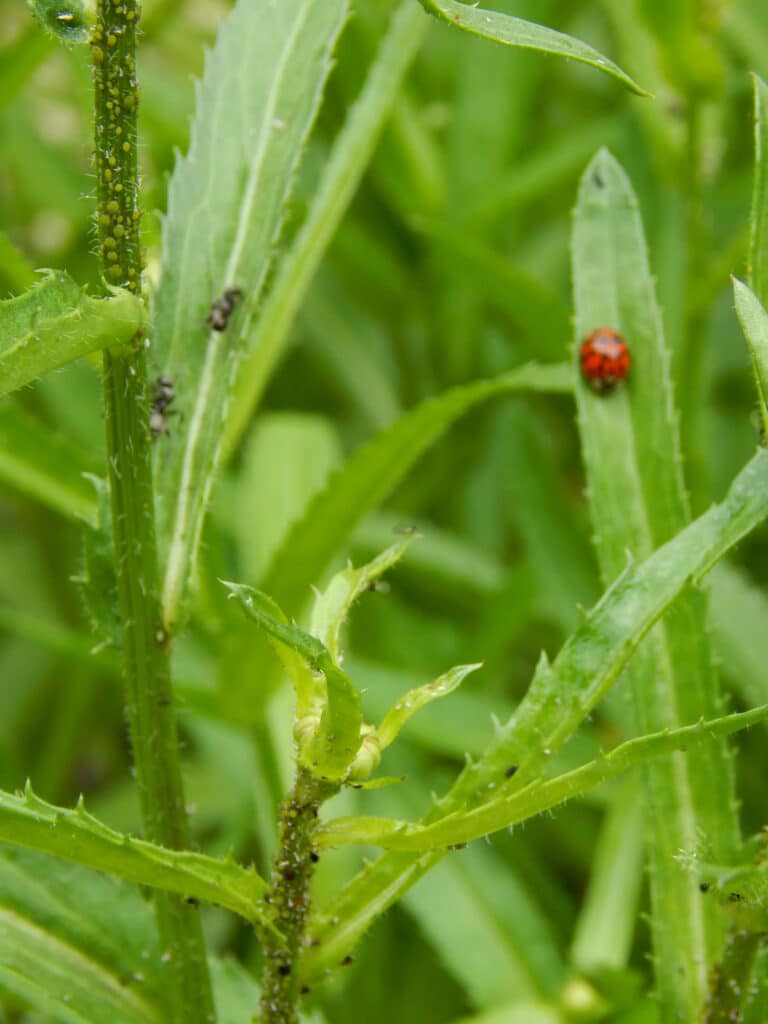
Use an official field guide to help you identify the scientific names of common flowers. Or the simple act of learning to slow down and observe them up close is more than enough.
Flowers can be observed all season long. Both a young toddler and a teenager can observe the same patch of flowers and create very different nature journal entries.

Revisiting the garden during the different seasons will make you feel as if you are visiting it for the first time.
The Value of Getting Outside in Nature
There is no denying the fact that kids in general are spending less and less time outside in nature. Exploring the woods, a patch of dirt, or even the far edge of the lawn where wildflowers and long grass grows.
Being outside often brings people of all ages peace and joy. By starting and keeping a nature journal with kids you are showing them just how valuable it is to be outside in nature.

Make sure to check out our free printable nature scavenger hunts! A fun way to head outside and explore nature together.
Resource Books for Parents
- Keeping a Nature Journal: Deepen Your Connection with the Nature Around You by Clare Walker Leslie



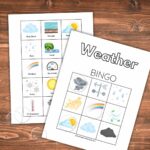
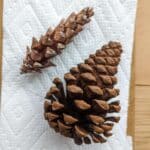
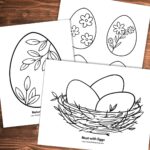
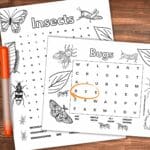
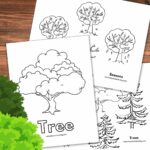
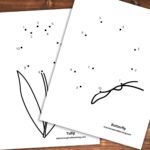

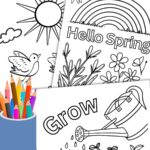
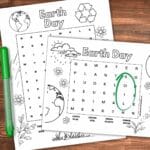
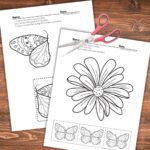
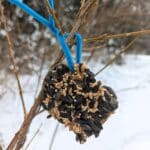




Sheena
I love this idea I would like to do one for myself!
Sarah
We have started to pursue a more Charlotte Mason approach to homeschooling and added in nature journaling. I love all the ideas you have listed. I might even create my own nature journal as well. This is such a fun way to have our kids work on their observational skills in a real life situation. Thank you so much for all of these great ideas!
Julie
Thank you Sarah, yes nature journaling is a wonderful way to practice making observations and ties in perfectly to the Charlotte Mason approach. I bet you will really enjoy starting your own journal along with your kids, it is really rewarding!
Ada
This is a beautiful post! There are so many things you can learn with Nature. Love all these ideas! Thank you for sharing!!!
Julie
Thank you for your kind words Ada. Yes, nature is pretty amazing!
Kelley Chance
Fantastic ideas and examples! I think this fall I'll try to make nature journaling more regular with my kids.
Julie
Thank You Kelley! And you should you will love it! Thanks for commenting.
Joy
I love the Nature Journaling book by Clare Leslie and have used some of the principles with my homeschool co-op art classes over the years! I encourage kids to keep a nature journal to improve their observation and drawing skills. I think it’s the best way to practice!
Julie
Nature journals are a wonderful way to improve observations skills, nature appreciation, and drawing. A great way to practice art while connecting with the outdoors. Thank you for taking the time to comment.
Betty
I would like to thank you for your resources that you have provided I was Inspired by the different ways I can enhance children learning outside. Friday we took a group of 3 and 4yr. old outside to observe the trees turning different colors and to pick up leaves and branches, etc. The students were not aware of the seasons so I wanted to revisit that experience and your information about seasons will allow the children to understand the concept through your pictures. Thank you again for your support for teachers and children.
Julie
Hi Betty, Thank you for taking the time to leave a wonderful comment. Observing the changing seasons with 3 and 4 years old is such a wonderful activity especially since they are just starting to really understand the cycles of nature. Heading outside together to observe trees and leaves is a great activity. All the Best, Julie
Cindy
The children love having their own record books, and you make so exciting! Thanks again !
Julie
You're welcome! Keeping a journal is super fun and even a small notebook works great